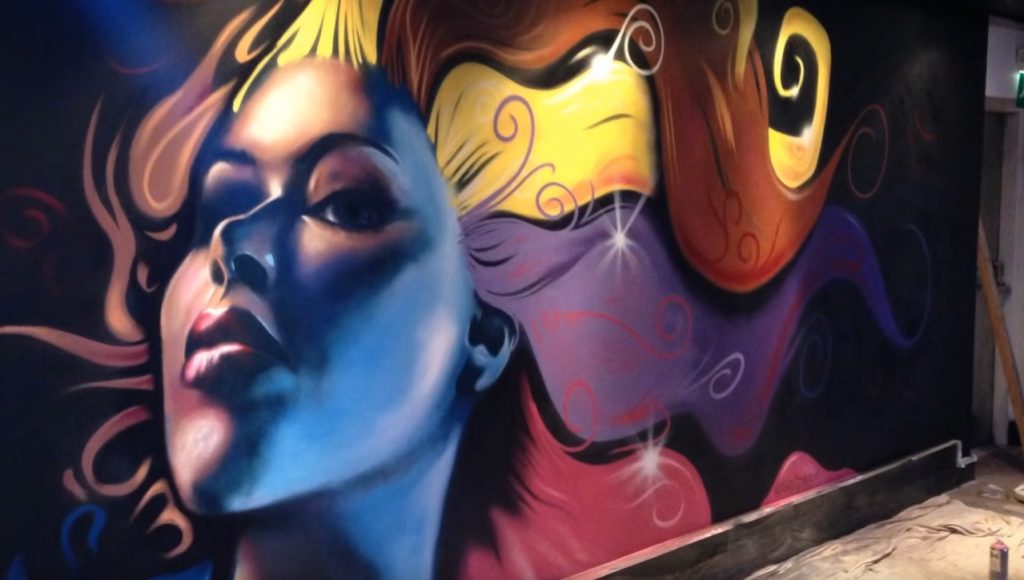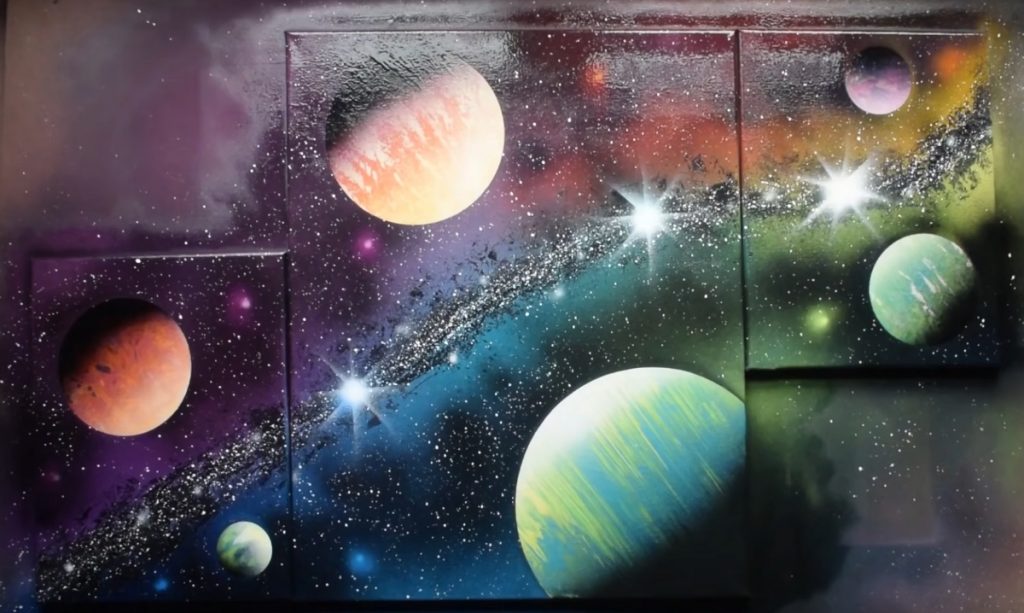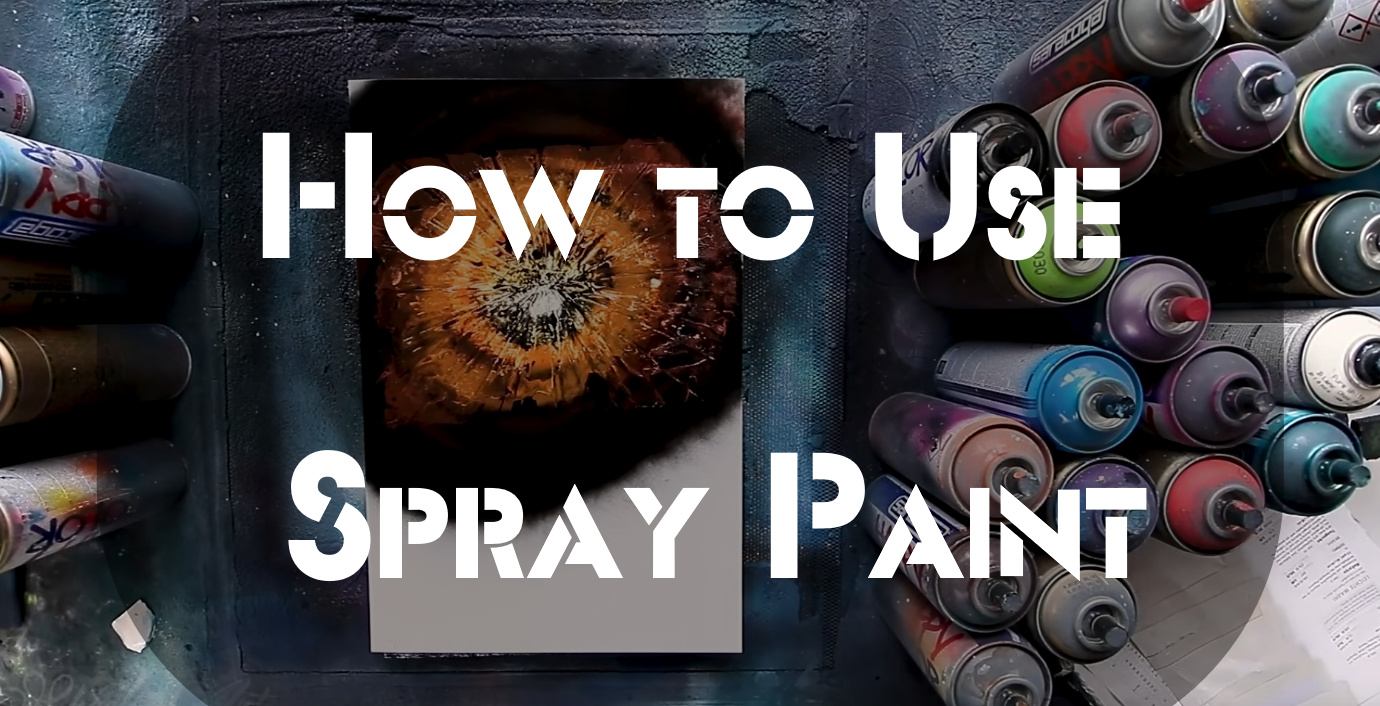Yo, what’s up guys! So, if you’re feeling like getting your creative juices flowing and wanting to express yourself, then you gotta check out spray paint art! Trust me, it’s a blast! I’m here to give you all the dope on how to use spray paint like a pro.
We’ll be talking about some sweet tips and tricks for making your art pieces look amazing and how to take care of your spray paint gear.
What Is Spray Paint Art?
In some cities, graffiti is seen as a bad thing. People use it to write their names on walls or other places. But in recent years, street spray painting art has been used by artists to make cities look more excellent. This type of art brings color into dead spaces and can be used to send messages to people who see it.
Spray paint art started in 1949 when aerosol cans were developed. The first color of paint was aluminum. But now, artists have more colors, textures, and finishes. They can also paint on different surfaces.
Oil-based paints can be used on many surfaces, like concrete, glass, walls, wood, and canvas. They’re more affordable and versatile than water-based spray paints. We’ll recommend one brand of oil-based spray paint in this article.
Using Oil-Based Spray Paint
When using spray paint, avoid breathing in the toxic fumes. They can harm your health, so ensure you are in a well-ventilated area and even wear a mask if necessary. To get the best experience out of your painting time, ensure you have everything you need before starting.
Oil-based spray paint is suitable for projects because it dries quickly. But it can be hard to remove if you make a mistake. That’s why you should have some acetone or alcohol-based thinner to help you clean up any messes.
Some people use a smaller surface than a wall or building to do their spray painting art. They might use canvas or poster board. The benefit of using canvas is that it doesn’t lose its shape, and the paint sticks well. If you are using a board, make sure you paint on the glossy side, so the paint adheres well and doesn’t lose its color.
You will need a few things for this spray paint tutorial: your paint, a surface to work on, thinners or acetone, and possibly a mask. Some artists also like to use tools or hand-made stencils to make designs. Using cardboard to create your design, you can also easily make your own stencil. Here is a summary of the advantages and disadvantages of using oil-based spray paints:
PROS
- Available in a range of colors
- Sticks well to a variety of surfaces
- Does not take long to dry
- Dries quicker than paints applied with a brush
- Durable
- Not as messy as some other types of paints
- Affordable for small projects
CONS
- Toxic fumes (it is necessary to wear a mask, regardless of whether you are working indoors or outdoors)
- Expensive when it comes to more significant projects
- The paint itself can be toxic (using it requires the use of gloves)
You may be wondering how to remove spray paint from concrete?
Spray Painting for Beginners

To start your graffiti, you will need some supplies. You should have them close by so you do not have to stop to get them while you are painting.
You can also use an airbrush instead of spray paint. To find the right paint, you will need to read my guide.
Protective Gear
Spray paint art is beautiful, but it’s not without its risks. The fumes from the paint are toxic, and the paint itself can damage your hands. So be careful if you decide to try this art form yourself!
To use these products safely, you must wear protective gear like masks and gloves. When we say masks, we mean heavy-duty masks, not cloth masks. Cloth masks will not protect you from spray paint fumes and can make you sick in the long run.
If you want to learn how to spray paint art without harming yourself, following these few simple steps is essential. It may require an initial investment, but it is worth it in the long run. Plus, if you plan on using spray paint in the future, you must take these precautions.
Newspaper
Newspapers are a cheap way to protect your furniture and floor while painting. They can also help you try different colors and amounts of paint.
Your Surface
Not all spray paint is the same. You need to get the right kind of spray paint for your project. For example, some spray paints can’t be used outdoors, and others can’t be used on furniture. Make sure you know what kind of surface you are painting on before buying your spray paint.
If you want to use canvas for your spray paint, make sure the canvas is made specifically for spray paint. If you don’t, you must paint the canvas with a primer first. If you use a poster board, remember that buying a bulk pack may be cheaper than purchasing single sheets.
Spray Paint

When choosing spray paint, it is essential to consider the project you are working on. Some spray paints are designed for larger projects, while others are for indoor use. Some have a glossy finish, while others have a matte appearance when dry. You will also have to decide whether you want to use water- or oil-based paints. We will discuss how to use spray paint later in this article.
Cleaning Products
Spray paint can mess and stain surfaces it lands on. That is why we suggest you put down some newspapers. If you don’t want to deal with the stains, you can use alcohol-based thinners or solvents to clean the surface. However, if you use newspapers, it is a good idea to have a cleaning agent around just in case something happens. Thinners can be harsh on your hands, so if you want something gentler, try baby oil or modest quantities of acetone.
Stencils
Stencils are a cheap way to help you with your spray painting. You can buy them from most stores or make your own. They can help you cover areas you don’t want to paint and help you focus your paint on smaller sizes.
Spray Paint Handle
If you want to do spray paint art for a hobby or a career, you should buy a spray paint handle. This device attaches to the front of the nozzle and makes it easier and more comfortable to use the spray paint for a long time.
There are many different types of spray paint that you can use for your art. The following section will show you some examples of what is available.
How to Do Spray Paint Art

Using spray paint initially seems complicated, but you can hone your skills with practice. For now, take a look at these tips and tricks that can help you get to know the basics of using spray paint.
- Find an outdoor space or a well-ventilated indoor area where you can do your spray paint art without the risk of getting sick or breathing in harmful fumes.
- Always shake your spray paint can before you start painting and during the painting process. This will help the paint to be applied evenly.
- Make sure to paint in cooler weather. The heat can affect the consistency and quality of the paint.
If you are painting furniture or wood, it is a good idea to sand it down before you start. This will help the paint stick better and look more even. Sanding also removes old paint and makes the surface more even.
- Always test your paint on newspaper before you apply it to your project. This can help you become accustomed to the pressure and test the paint’s color. Once the paint hits a surface, it is not easy to remove.
- Plays the paint a short distance from the surface is essential. If the can is too close, the paint will be uneven and build up to create blotches. You should be spray painting about 6 inches from your working surface.
- One of the secrets behind effective spray painting is to move your hand a little when spraying to ensure that an area is covered from many different angles.
- If painting furniture, more than one coat of paint is required. Three usually does the trick.
- When applying second and third coats of paint, ensure that previously used coats of paint are completely dry. This will prevent unwanted bubbling. Spray paint dries pretty quickly, so this should not delay your painting for too long.
- Painting furniture also requires that you cover your paint with a fixative, especially if the item you are painting will be outdoors. Only use a fixative once your paint is completely dry.
Spray Paint Art Techniques and Tips

Once you are familiar with the fundamental practical aspects of setting up your workstation and making the most of your paints (as described above), you can explore the different effects you can create that make spray-painting a one-of-a-kind art technique.
- Spray paint dries fast, so work as quickly as you can.
- Be creative about the kinds of objects you have around you when you work. The most ordinary household objects like toothbrushes and sponges can be surprisingly helpful when applying your paint in different ways.
- The ideal way of beginning your painting is to start by spraying a light outline of all the elements of your design first. This provides a layout.
- Once you have done this, fill each area with a solid layer of each color you intend to use. This should be a relatively short process.
- After this, use newspaper to move the paint to where you would like it to go. This can produce some significant effects. Newspaper can also cover your painting if you want it to absorb excess paint.
- There are many ways to create spray paint art. You can use a toothbrush or newspaper to make finer details or a sense of motion. Magazine paper, tinfoil, or newspapers can produce exciting textures if you scrunch them up.
- Once you have finished designing your poster, you will want to paint the background. This is done last so that if you make any mistakes, you can cover them up with the paint.
This spray paint tutorial will give you the information you need to start spray painting. We hope this will help make your journey into graffiti art an enjoyable experience and that you have fun experimenting with spray paint!
FAQ
How to Do Spray Paint Art?
Spray paint can be tricky to use at first. The best way to get better at it is to practice! You can find a lot of information about spray paint online. This will help you become more comfortable with this type of paint.
What Are Some Spray Paint Art Techniques?
To create beautiful art with spray paint, you can use objects around your house. This will help you create texture and details in your painting. Unlike artists who use smaller brushes, spray paint artists can use paper, tinfoil, or cotton swabs to make their work more realistic.
How to Use Spray Paint?
When using spray paint, wearing protective clothing like a heavy-duty mask and gloves is essential. This is because the chemicals in spray paint can be toxic. You should also stand away from your surface when spraying, as being too close can cause the paint to pool. Finally, ensure you leave enough time for each layer to dry before painting a second or third coat.
Hey there! I’m Richard Baker, a miniature painter who’s been in the game for a solid decade now. I’ve been painting miniatures for ten years and I’ve got a ton of tips and tricks to share with you all. My website is a treasure trove of knowledge that I’ve gathered from both my own personal experiences and from reading all sorts of books.





Leave a Reply